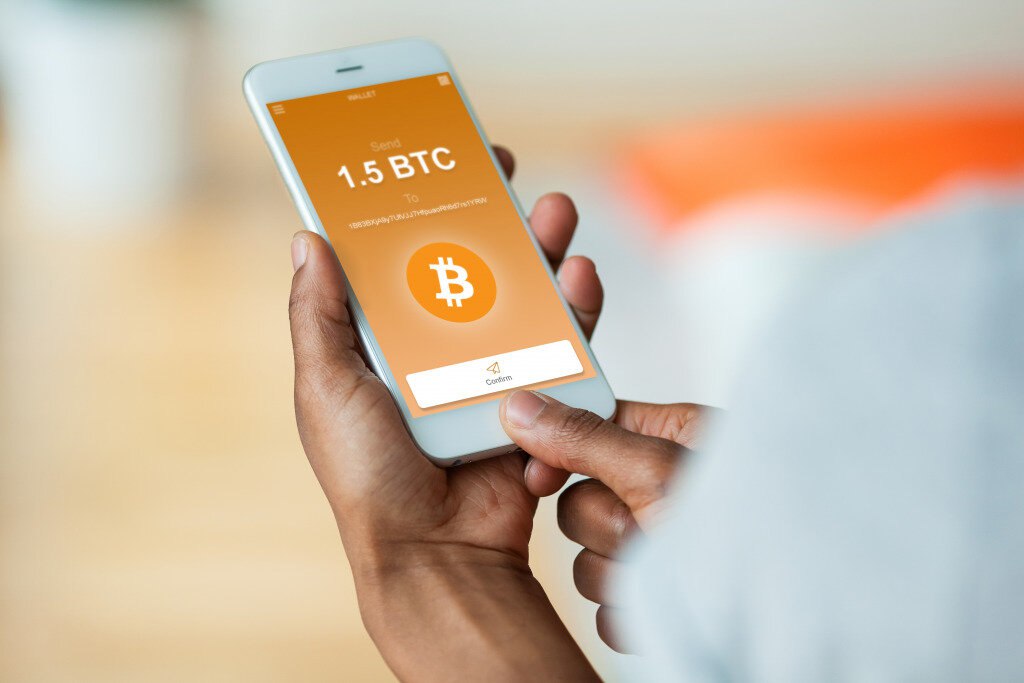To truly harness its potential, exploring the multitude of possibilities is essential. This guide will delve into the diverse range of opportunities for managing your Bitcoin holdings, empowering you to make informed decisions and extract maximum value from your investment.
Bitcoin has captivated the global financial landscape, captivating the attention of investors, tech enthusiasts, and forward-thinking individuals. As a decentralized digital currency, Bitcoin operates on the blockchain, which ensures transparency, security, and immutability. Its limited supply and increasing adoption have contributed to its high value over the years, making it a sought-after asset in investment portfolios and everyday transactions.
What do I do with Bitcoin after I buy it? To answer that question, once you have acquired Bitcoin, you enter a realm of possibilities that extend far beyond traditional investment strategies. From long-term investment and trading to spending options, diversification, and innovative lending platforms, this guide will provide you with the knowledge and tools necessary to navigate the Bitcoin landscape successfully. By understanding these various avenues, you can fully harness the potential of Bitcoin and make the most of your newfound digital asset.
In the following sections, we will explore the key strategies and options available to Bitcoin holders, providing actionable insights and practical advice on optimizing your Bitcoin experience. Whether you hold onto your Bitcoin as a long-term investment, actively trade it, spend it on goods and services, diversify your cryptocurrency portfolio, or explore innovative lending platforms, this guide will serve as your roadmap to success.
Remember, the cryptocurrency landscape constantly evolves, with new opportunities and challenges emerging regularly. By staying informed, remaining adaptable, and making calculated decisions, you can position yourself to capitalize on the exciting potential of Bitcoin while effectively managing its associated risks.
So, let's dive into the world of Bitcoin and discover the possibilities awaiting you after your initial purchase. Get ready to unlock the full potential of this groundbreaking digital asset and embark on an exhilarating journey into the future of finance.
Secure Your Bitcoin Wallet
What do I do with Bitcoin after I buy it? After purchasing Bitcoin, the first and most crucial step is to ensure your Bitcoin wallet's security. A Bitcoin wallet is a tool that allows you to store, send, and receive Bitcoin securely. The security of your wallet impacts your Bitcoin holdings. Several types of wallets are available, each with advantages and security considerations.
A. Hardware Wallets:
Hardware wallets are generally known as the most secure option for storing Bitcoin. These physical devices resemble USB drives and provide an offline storage solution, keeping your Bitcoin keys and transactions isolated from potential online threats. Popular hardware wallet brands offer robust security features, including secure chip technology and PIN code protection.
When using a hardware wallet, the private keys required to access your Bitcoin holdings never leave the device, significantly reducing the risk of unauthorized access. Additionally, hardware wallets often incorporate additional security measures, such as a recovery seed phrase, which enables you to restore your wallet in case of loss or damage to the device.
B. Software Wallets:
Software or hot wallets are applications installed on your computer or mobile device. These wallets balance security and convenience, allowing easy access to your Bitcoin holdings while implementing security measures.
When using a software wallet, it's crucial to download the wallet software directly from the official website or a reputable source to avoid counterfeit or malicious versions. Additionally, regularly updating the wallet software is vital to protect against potential vulnerabilities.
Software wallets often employ encryption techniques to safeguard your private keys and offer features such as backup options and the ability to create multiple wallets. It's advisable to use strong, unique passwords and enable two-factor authentication (2FA) whenever possible to add an extra layer of security.
C. Online Wallets:
Online wallets, or web wallets, are accessible through a web browser and are provided by various cryptocurrency exchanges and wallet service providers. These wallets offer convenience by allowing you to access your Bitcoin holdings from any internet-connected device. However, they also come with increased security risks compared to hardware and software wallets.
Choosing a reputable and trusted service provider with a strong security track record is crucial when opting for an online wallet. These platforms typically employ robust security measures, such as multi-factor authentication and advanced encryption, to protect user funds.
While online wallets offer convenience, they introduce a degree of vulnerability as they rely on the service provider's security practices. Storing large amounts of Bitcoin in an online wallet is generally discouraged, as exchanges or online wallet platforms may be targeted by hackers. If you choose to use an online wallet, consider keeping only a portion of your funds in it, reserving the majority in more secure storage options like hardware wallets.
Securing your Bitcoin wallet is of utmost importance to protect your digital assets. Hardware wallets are the most secure option, providing offline storage and advanced security features. Software wallets balance security and convenience, but it's crucial to download them from official sources and keep them updated. Online wallets provide easy accessibility but carry higher security risks due to reliance on service providers. If using an online wallet, consider keeping only a portion of your funds there and storing the majority in more secure options. Alternatively, our wallet leverages private key encryption with Secure Enclave and protects your assets with PINs, biometrics, and 2-Factor Authentication. Certified by ISO/IEC 27001, we utilize rigorous security policies, conduct risk assessments, ensure data protection, and employ state-of-the-art cybersecurity measures.

General Wallet Security Best Practices
Regardless of the type of wallet you choose, following these best practices will enhance the security of your Bitcoin holdings:
1. Strong Passwords:
Use a unique and strong password for your wallet, combining uppercase and lowercase letters, numbers, and special characters. Avoid reusing passwords across multiple platforms.
2. Two-Factor Authentication (2FA):
Enable 2FA whenever possible to add an extra layer of security. This typically involves linking your wallet to an authentication app on your mobile device or receiving authentication codes via SMS.
3. Regular Updates:
Keep your wallet software up to date with the latest releases and security patches. Software updates often include bug fixes and vulnerability patches that strengthen the wallet's security.
4. Backup Your Wallet:
Regularly back up your wallet and store the backup in a secure location offline. This ensures you can recover your Bitcoin holdings in case of damage, device loss, or theft.
5. Be Cautious of Phishing Attempts:
Beware of phishing attempts where malicious actors trick you into revealing your wallet credentials. Always ensure you are accessing the official wallet website and exercise caution when clicking on suspicious links or providing personal information.
HODL Bitcoin for Long-Term Investment
One popular and widely adopted strategy among Bitcoin investors is "HODLing." The term "HODL" started from a misspelling of "hold" in a Bitcoin forum post in 2013 and has since become a mantra for long-term Bitcoin investors. HODLing involves purchasing Bitcoin to hold it for an extended period, often years, in anticipation of long-term price appreciation. This strategy is based on the belief that Bitcoin's value will continue to increase over time due to its limited supply, growing adoption, and potential as a store of value and a hedge against traditional financial systems.
HODLing Bitcoin requires patience, conviction, and a strong belief in the long-term potential of the cryptocurrency. Here are some tips to help you navigate the HODLing strategy effectively:
Avoid Impulsive Decisions:
Bitcoin's price can be highly volatile, and short-term fluctuations are common. It's essential to resist the temptation to make impulsive decisions based on short-term market movements. Bitcoin has experienced significant price corrections, substantial recoveries, and new all-time highs. Maintaining a long-term perspective allows you to ride out the market's ups and downs without succumbing to panic selling or making rash investment decisions.
Stay Informed:
To be a successful HODLer, staying informed about the latest news and developments in cryptocurrency is crucial. Understanding market trends, regulatory changes, technological advancements, and adoption rates can provide valuable insights into the long-term potential of Bitcoin. Follow reputable sources, read whitepapers, and engage with the cryptocurrency community to comprehensively understand the factors influencing Bitcoin's growth trajectory.
Consider Dollar-Cost Averaging (DCA):
Dollar-cost averaging, or DCA, is a strategy that involves investing a fixed amount of money into an asset regularly, regardless of its price. With Bitcoin, you can implement DCA by consistently purchasing smaller amounts of Bitcoin over time instead of investing a lump sum all at once. This approach helps mitigate the impact of short-term price fluctuations and allows you to accumulate Bitcoin at an average cost. By spreading out your purchases, you reduce the risk of buying at a market peak and benefit from the potential long-term growth of Bitcoin.
Secure Your Bitcoin:
As a long-term investor, it's crucial to prioritize the security of your Bitcoin holdings. Ensure you have a secure wallet (as discussed earlier in this guide) to protect your assets from hacks, theft, or loss. Implement robust security measures, such as using hardware wallets, enabling two-factor authentication (2FA), and regularly backing up your wallet. Taking these precautions lets you know that your Bitcoin is stored safely for the long term.
Review and Reassess:
While the HODLing strategy is centered around long-term investment, reviewing and reassessing your investment thesis periodically is essential. Monitor the progress of Bitcoin's adoption, technological advancements, and regulatory developments to ensure that your investment aligns with your evolving expectations. Consider consulting with professionals or financial advisors specializing in cryptocurrencies to gain additional insights and perspectives on your investment strategy.
Explore Crypto Trading and Speculation
What do I do with Bitcoin after I buy it? If you have a penchant for active trading and are comfortable with the risks involved, consider engaging in short-term trading or speculation with your Bitcoin holdings. Trading involves buying Bitcoin at a lower price and selling it at a higher price, aiming to profit from price movements. It's an exciting and dynamic way to participate in the cryptocurrency market and generate returns.
Before venturing into the trading world, it's essential to understand inherent risks. Cryptocurrency is volatile, and prices can fluctuate rapidly. Trading requires knowledge, skills, and discipline to navigate the market.
A. Educate Yourself:
To become a successful trader, you must educate yourself on the fundamentals of trading and understand the key principles of technical analysis. Technical analysis involves studying historical price data, chart patterns, and trading indicators to identify potential trends and price movements. Familiarize yourself with popular technical analysis tools like moving averages, RSI, and Moving Average Convergence Divergence. Numerous resources, books, online courses, and trading platforms offer educational material to help you develop your trading skills.
B. Develop a Trading Strategy:
Before entering the trading arena, it's crucial to develop a well-defined trading strategy. Your strategy should encompass your goals, risk tolerance, preferred trading style, and time commitment. Define your entry and exit points, establish risk management measures, and set profit targets. A trading strategy provides a framework and guidelines, helping you make informed decisions and avoid impulsive trades driven by emotions.
C. Start with a Small Investment:
When starting as a trader, it's wise, to begin with a small portion of your Bitcoin holdings and gradually increase your involvement as you gain experience in your trading. This approach allows you to learn and adapt without risking much of your investment portfolio. Consider allocating a specific percentage of your Bitcoin holdings dedicated solely to trading, keeping the rest in a secure wallet for long-term investment.
D. Utilize Trading Tools and Platforms:
Numerous trading platforms and tools are available that cater specifically to cryptocurrency trading. These platforms provide features such as real-time price charts, order books, trade execution, and technical analysis indicators. Discover popular cryptocurrency exchanges with user-friendly interfaces and advanced trading functionalities. Compare features and fees to find the platform that suits your trading needs.
E. Risk Management and Discipline:
Successful trading requires strict risk management and discipline. Set a maximum percentage of your trading capital that you are willing to risk on any single trade, usually called the "risk per trade." Limiting this to a small percentage, typically 1-2% of your trading capital, is recommended to mitigate potential losses. Additionally, employ stop-loss orders to automatically exit a trade if the price reaches a predetermined level, limiting potential losses.
Maintain discipline by adhering to your trading plan and avoiding emotional decisions. Emotions like fear and greed can cloud judgment and lead to impulsive trades. Stick to your predefined strategy, be patient, and avoid chasing short-term market trends or FOMO (Fear Of Missing Out) trades.
F. Stay Informed:
Stay updated with up-to-date developments and news in the cryptocurrency market. Monitor industry trends, regulatory changes, and significant events that may impact Bitcoin's price and market sentiment. News about institutional adoption, regulatory clarity, or technological advancements can influence market dynamics. Follow reputable cryptocurrency news sources, join online communities, and engage with fellow traders to stay informed and gain valuable insights.
Diversify Your Portfolio
Diversifying your crypto portfolio involves allocating investment across different cryptocurrencies and blockchain projects. While Bitcoin remains the dominant cryptocurrency, diversification allows you to explore other opportunities in the crypto market and potentially benefit from the growth of different assets. Here are some reasons why diversifying your portfolio can be beneficial:
1. Risk Mitigation:
Diversification is a fundamental principle of investment. By spreading your investment across multiple assets, you reduce the risk of being heavily exposed to a single cryptocurrency. Cryptocurrency markets can be extremely volatile, and the value of individual coins can fluctuate. Diversification helps mitigate the impact of price volatility and decrease the likelihood of significant losses.
2. Exposure to Different Opportunities:
Each cryptocurrency and blockchain project offers unique features, use cases, and growth potential. By diversifying, you gain exposure to different sectors, technologies, and teams working in the blockchain space. For example, while Bitcoin is often considered a digital store of value, other cryptocurrencies like Ethereum focus on decentralized applications (DApps) and smart contracts. Diversification allows you to participate in the growth of various sectors within the crypto ecosystem.
3. Potential for Higher Returns:
Diversification can enhance your potential for higher returns. While Bitcoin has grown substantially, other cryptocurrencies have also experienced significant price appreciation. By diversifying your portfolio, you increase the chances of capturing the upside potential of different cryptocurrencies. This approach allows you to benefit from the growth of promising projects that may outperform Bitcoin in terms of returns.
4. Participate in Emerging Trends:
The cryptocurrency market is dynamic, with new projects and technologies constantly emerging. By diversifying your holdings, you can participate in developing trends and technologies that have the potential to disrupt industries and reshape the future. Stay informed about new cryptocurrencies, Initial Coin Offerings (ICOs), and blockchain projects to identify opportunities for diversification.
When diversifying your portfolio, conducting thorough research and due diligence is essential. Consider factors such as the team behind the project, its technological innovations, market adoption, and potential risks. Analyze the whitepapers, explore the community surrounding the cryptocurrency, and stay updated with news and developments in the space. Additionally, be mindful of your risk tolerance and investment goals when deciding the allocation of your crypto holdings.
Diversification can mean something other than investing in numerous cryptocurrencies. It's about finding a balance between risk and reward. A well-diversified portfolio may include a mix of established cryptocurrencies like Bitcoin and Ethereum and carefully selected up-and-coming projects that align with your investment strategy and risk tolerance.
Remember that investing in cryptocurrencies carries risks, including market volatility, regulatory uncertainty, and technological challenges. Therefore, it's crucial to approach diversification with a long-term perspective, diversify responsibly, and regularly monitor your portfolio's performance to ensure it aligns with your investment objectives.
Spend Bitcoin
As the adoption of cryptocurrencies grows, so does the number of merchants and businesses accepting Bitcoin as a form of payment. You can explore online platforms, travel agencies, e-commerce websites, and physical stores that accept Bitcoin and spend your holdings directly. This option allows you to utilize your Bitcoin for day-to-day expenses or make specific purchases.
Additionally, Bitcoin debit cards are available, enabling you to load Bitcoin onto a card and use it at any merchant that accepts regular debit or credit cards. These cards instantly convert your Bitcoin into fiat currency, providing flexibility and ease of use.
Consider Bitcoin Loans and Lending
What do I do with Bitcoin after I buy it? You may explore Bitcoin loans and lending platforms if you can leverage your Bitcoin holdings without selling them. These platforms allow you to borrow against your Bitcoin while using it as collateral. This approach can be helpful when you need liquidity or want to invest without parting with your Bitcoin assets.
However, it's crucial to thoroughly research the platforms and their terms, including interest rates, loan durations, and collateral requirements, and consider the associated risks.
Conclusion
What do I do with Bitcoin after I buy it? Once you buy Bitcoin, a world of possibilities opens up. From long-term investment strategies to active trading, spending options, and leveraging your holdings, understanding what to do with Bitcoin is crucial for maximizing your investment potential. Whether you choose to HODL, diversify your portfolio, spend Bitcoin directly, or engage in lending and trading, remember to stay informed, make calculated decisions, and continually adapt to the evolving crypto landscape. As with any investment, weighing the risks and rewards, setting realistic expectations, and consulting with professionals if needed is essential. Good luck on your Bitcoin journey!







